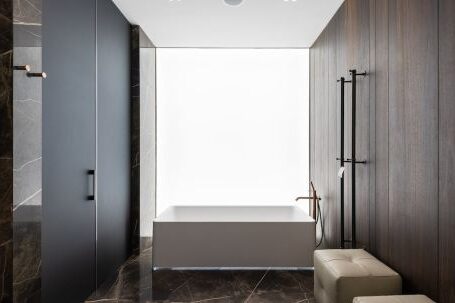Nature has been a source of inspiration for artists and designers for centuries. It is not surprising that many design philosophies incorporate elements of nature into their concepts. From architecture to product design, the influence of nature can be seen in various forms. This article explores how nature has shaped design philosophy and the impact it has on the way we live and interact with our surroundings.
Biophilic Design: Bringing Nature Indoors
One of the most prominent design philosophies influenced by nature is biophilic design. Biophilia, a term coined by biologist E.O. Wilson, refers to the innate human connection with nature. Biophilic design aims to create spaces that mimic natural environments, promoting a sense of well-being and connection to the natural world.
By incorporating elements such as natural light, plants, and organic shapes into interior spaces, biophilic design seeks to create a harmonious and nurturing environment. Research has shown that exposure to nature has numerous benefits for our physical and mental health, including increased productivity, improved mood, and reduced stress levels.
Sustainable Design: Working with Nature
Another design philosophy heavily influenced by nature is sustainable design. The concept of sustainability is rooted in the understanding that we are part of a larger ecosystem and must work in harmony with nature to ensure our long-term survival.
Sustainable design aims to minimize the negative impact of human activities on the environment by using renewable resources, reducing waste, and creating energy-efficient solutions. By emulating the efficiency and resilience of natural systems, sustainable design seeks to create a more sustainable future.
Organic Shapes and Patterns: Embracing Nature’s Aesthetics
Nature’s aesthetics, characterized by organic shapes and patterns, have also had a significant influence on design philosophy. From the fluid lines of Art Nouveau to the biomorphic forms of contemporary design, organic shapes and patterns inspired by nature can be found in various artistic movements.
Organic shapes and patterns in design not only provide a visually pleasing aesthetic but also create a sense of harmony and balance. The irregularity and asymmetry often found in nature’s designs add an element of surprise and uniqueness to the design, breaking away from the rigid and predictable forms commonly associated with man-made objects.
The Impact on Human Well-being
The incorporation of nature in design philosophy goes beyond aesthetics. Research has shown that exposure to nature has a positive impact on human well-being. Biophilic design, for example, has been found to reduce stress, improve cognitive function, and enhance creativity.
By bringing nature indoors and creating spaces that reflect the natural world, design can contribute to a healthier and more fulfilling life. Whether it is through the use of natural materials, the incorporation of daylight, or the integration of green spaces, design has the power to create environments that promote well-being.
Conclusion: Designing with Nature in Mind
Nature has always been a source of inspiration for designers. Its beauty, efficiency, and resilience have influenced various design philosophies, from biophilic design to sustainable design. By incorporating elements of nature into design, we can create spaces that not only look aesthetically pleasing but also contribute to our well-being and the health of the planet.
Designing with nature in mind is not just a trend; it is a way of thinking that acknowledges our interconnectedness with the natural world. As we continue to face environmental challenges, it is crucial for designers to embrace sustainable and biophilic principles in their work. By doing so, we can create a more harmonious and sustainable future for ourselves and future generations.





